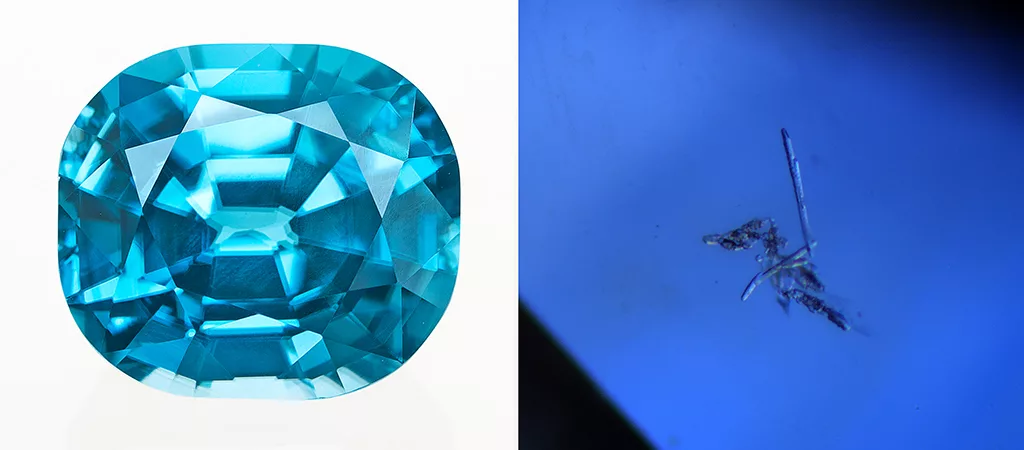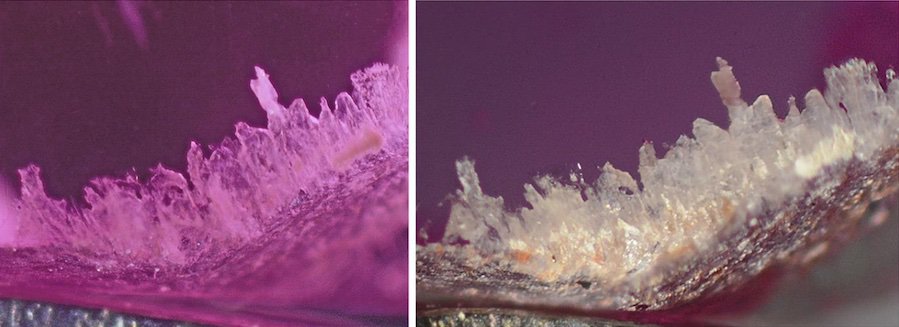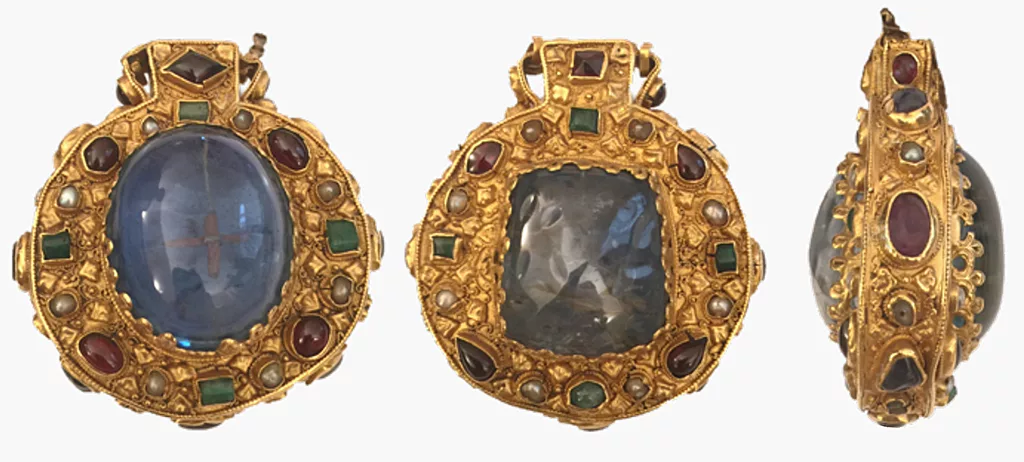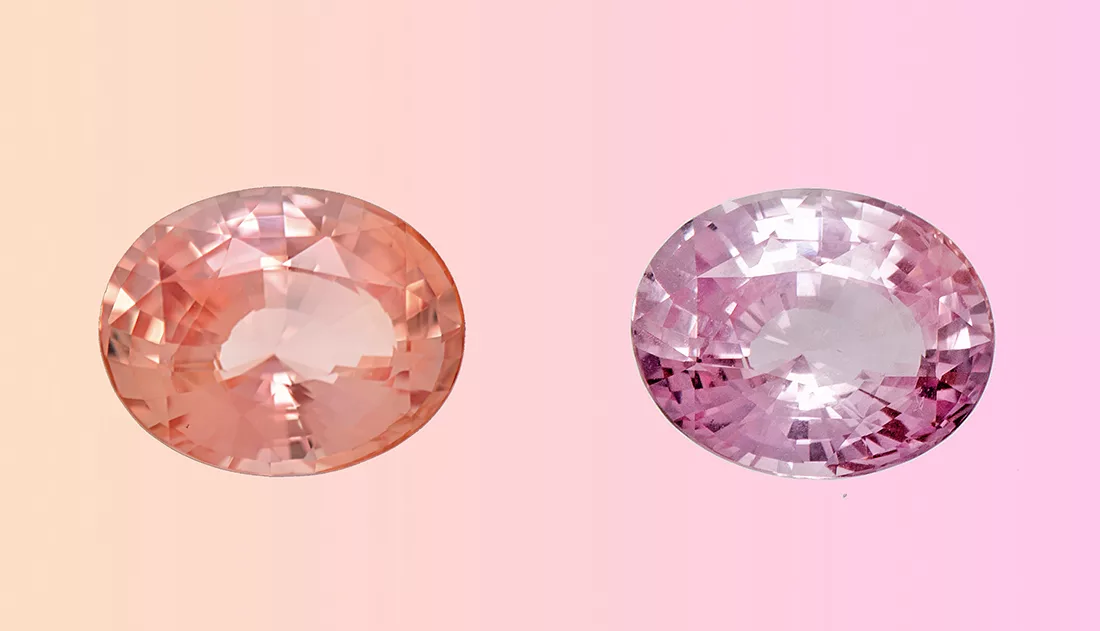
Padparadscha-like fancy sapphires with unstable colours
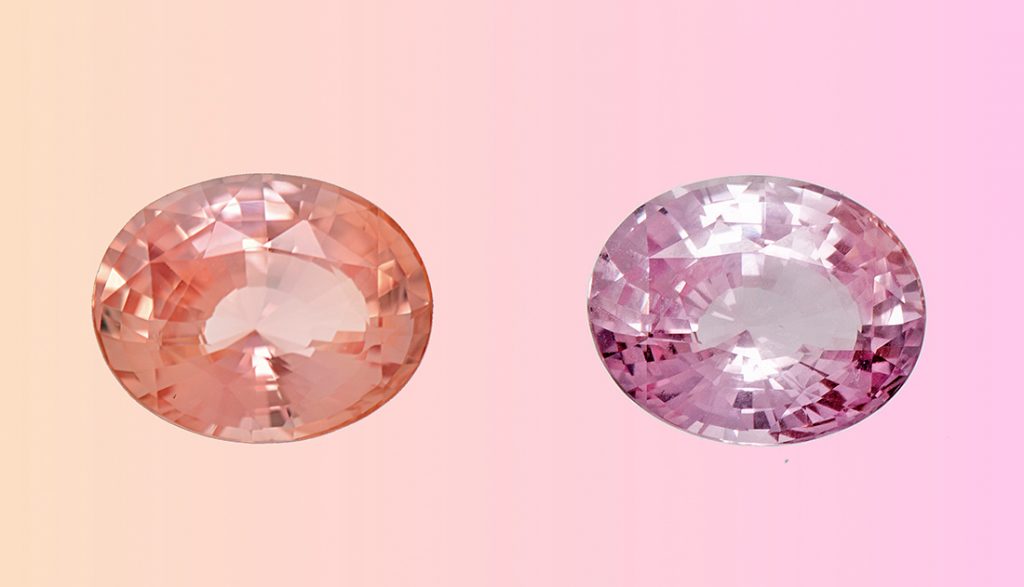
by Dr. Michael S. Krzemnicki, first published in Facette 24 (February 2018)
Colour and the stability of colour centres
The colour of corundum varieties is commonly related to the presence of colouring trace elements, such as chromium (for the red of rubies) and iron combined with titanium (for the blue of sapphires). As such, the equation is very simple: the more of these traces are present, the deeper saturated or dark the colour may be. Yellow sapphires are more complex as they can owe their colour to various causes, including so-called colour centres. Such colour centres are in fact structural defects at an atomic level, which when activated absorb certain parts of light (for yellow sapphires mainly in the blue range of the visible spectrum), thus resulting in different shades of yellow.
It has been known for many years that some of these (naturally formed) yellow colour centres in corundum are not stable, resulting in a slowly fading yellow colour upon exposure of the gemstone to daylight. Similar colour centres which are unstable under normal daylight are in fact not so rare in mineralogy. Known examples include certain (Alpine) amethyst crystals and this phenomenon can be quite dramatic for Maxixe-type (irradiated blue) beryl. It has also been described for (untreated) hackmannite, a rare sulphur-bearing variety of scapolite, which can be coloured stunningly purple by placing the stone under a UV lamp for a few minutes, before the colour fades out again (rather quickly) under daylight.
The case of yellow sapphires
The effect of fading in daylight and reactivation by UV radiation is known in scientific literature as reversible photochromism or tenebrescence. Interestingly, this effect has already been reported for synthetic corundum and observed in our own in-house colour-stability studies on a small number of natural yellow sapphires from Sri Lanka (see Figure 2, and Hughes 1998). In all our studies, this group of yellow sapphires consistently gained slight brownish yellow to marked yellow tones after UV exposure, which under normal light conditions would fade out over a period of several days. It has to be said that all these tenebrescent natural yellow sapphires do not fade out completely after applying a fading test. They did not become colourless but just showed a noticeable reduction in their yellow colour saturation.
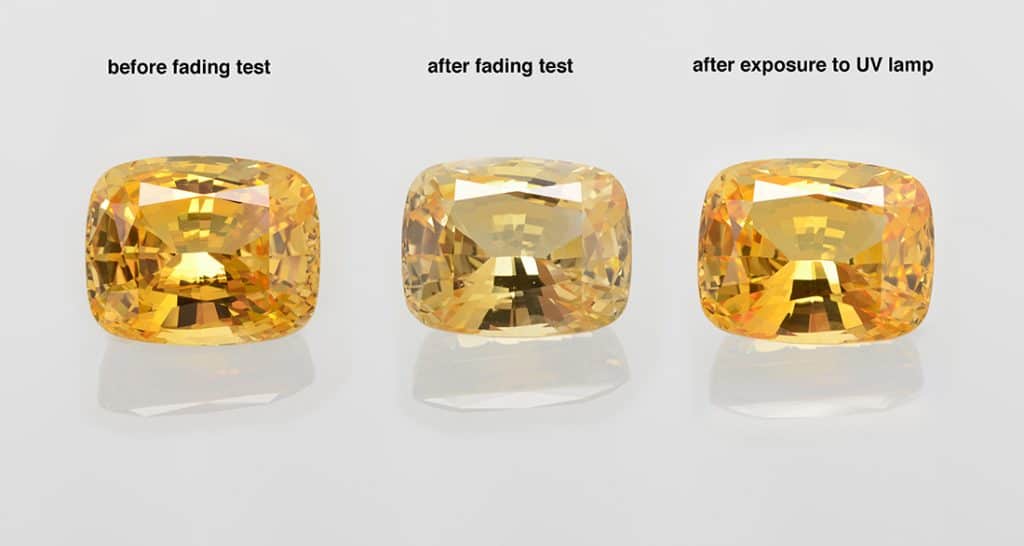
As a consequence of this, it is our normal procedure at SSEF to test the colour stability of (metamorphic) yellow sapphires – always with the permission of the client. The result of the fading test (colour considered stable or colour unstable) is then disclosed in the comment section of our SSEF reports.
The case of padparadscha with unstable (reversible) colour
In the past year, a new corundum deposit emerged near the small town of Ambatondrazaka in Central-East Madagascar (see last SSEF Facette, No. 23, page 15, and ICA InColor No. 35, Spring 2017, pages 44-47). This new site has produced an impressive range of sapphires – mainly blue of partly excellent beauty and size – but also a range of other fancy colours, including subtle pinkish orange stones, a colour variety known and highly appreciated in the trade as padparadscha.
However, part of these stones show a distinct change of colour over time shifting from a distinct pinkish orange to just pink in the course of weeks. Similar to the above mentioned yellow sapphires, the colour of these stones with unstable colours can be restored after a short exposure to UV light, so that they become pinkish orange again (at least until they start to slowly fade out again in daylight). In other terms, the stable colour of these stones is in fact pink (chromium-related), and the superposed unstable colour is yellow (due to an unstable yellow colour centre), resulting – if activated – in an overall orange to pinkish orange colour of the stone (Figure 3).
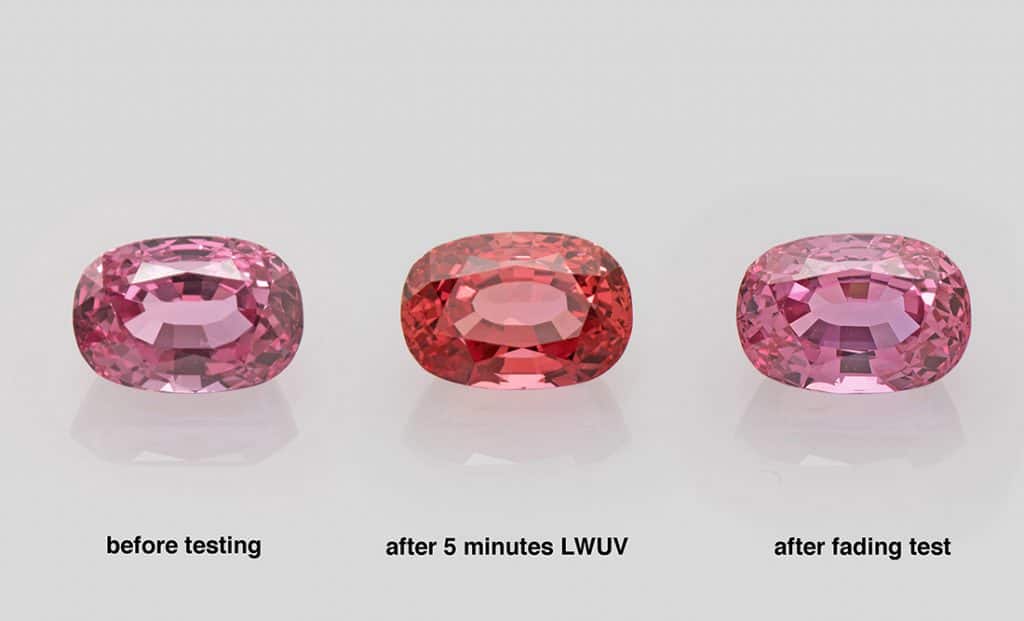
The reason for this quite unusual colour change (instability) of this new material from Madagascar is very similar to the above mentioned yellow sapphires. Their subtle padparadscha colour is in fact a mix of a weak chromium-related absorption (resulting in a pink colour) superposed by broad absorption bands due to yellow colour centres. In cases where such a colour centre is not stable, it results in the observed shift of colour from pinkish orange (colour centre active) to pink (colour centre inactive). Spectroscopically spoken, the colour shift results from a distinct reduction (fading out) of a yellow colour centre, as can be seen in absorption spectra before and after fading tests (Figure 4).
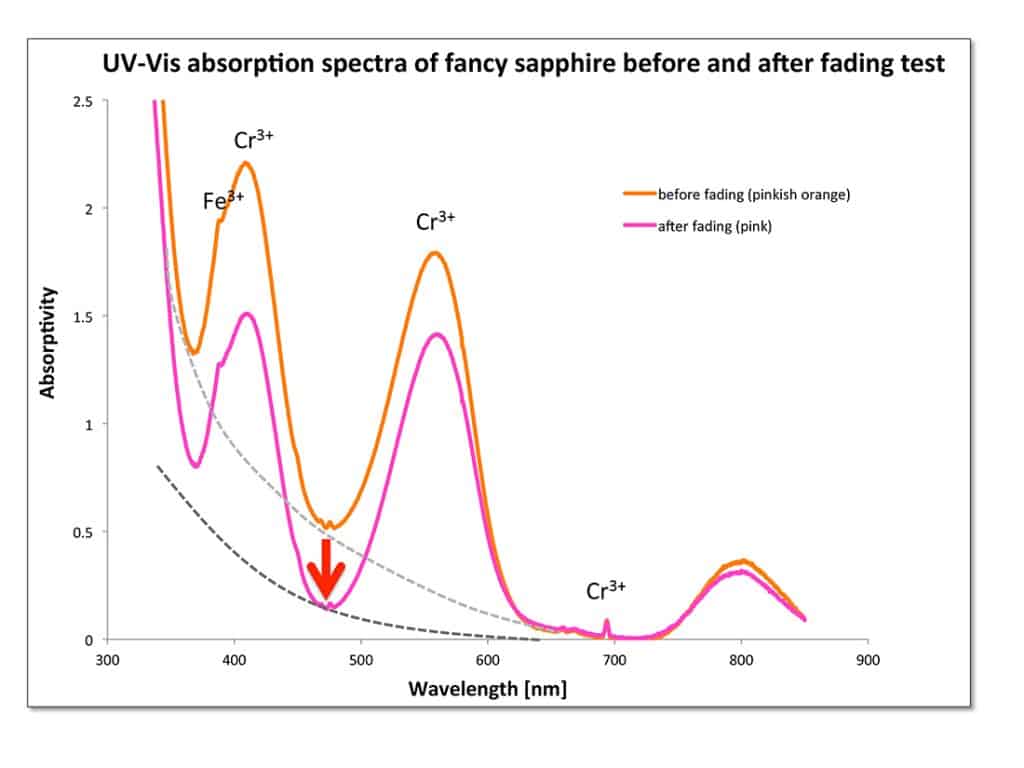
Fading test and disclosure of unstable colour on SSEF reports
Based on current scientific knowledge, the colour stability of gemstones can be quite easily tested – even by a well-trained gemstone dealer. Before testing, the colour of the gemstone has to be very well defined (e.g. with Munsell colour charts or other Colour Scan systems). The stone is placed on a metallic reflecting plate and then exposed during approximately 3 hours to a very strong fibre optic light source (halogen). After this, the colour is again meticulously determined. Any noticeable change/shift may also be confirmed by UV-Vis spectra taken before and after the fading test. To check restoration of colour with UV radiation, the stone is subsequently placed table down directly on a strong UV light source (in a dark box) and exposed for about 10 minutes to UV radiation. Again, the colour needs to be meticulously determined to check if any change has occurred.
In cases where this tenebrescent shift of colour is only minimal (as we observed in a few padparadschas from Sri Lanka), it can be neglected and does not need specific attention. Some of this new material from Madagascar, however, has shown a very marked shift of colour from (slightly pinkish) orange to pure pink (Figure 2), which in our opinion requires specific disclosure. Buying a stone as padparadscha and seeing it a few weeks later as a just pink sapphire might be quite disillusioning for a consumer.
As a consequence, the SSEF is now regularly carrying out fading tests on padparadscha and padparadscha-like sapphires, again always with the consent of the client. We then disclose the stability of colour on our reports in the comments section. A further consequence of these new stones shifting from orange to pure pink, is that we do not call these stones padparadscha, but fancy sapphire, adding in such cases an explanation letter to our report. In our understanding, the term padparadscha is only applicable for sapphires of subtle orange pink to pinkish orange colour which do not show a noticeable colour shift.
Fancy sapphire with ‘chameleon effect’
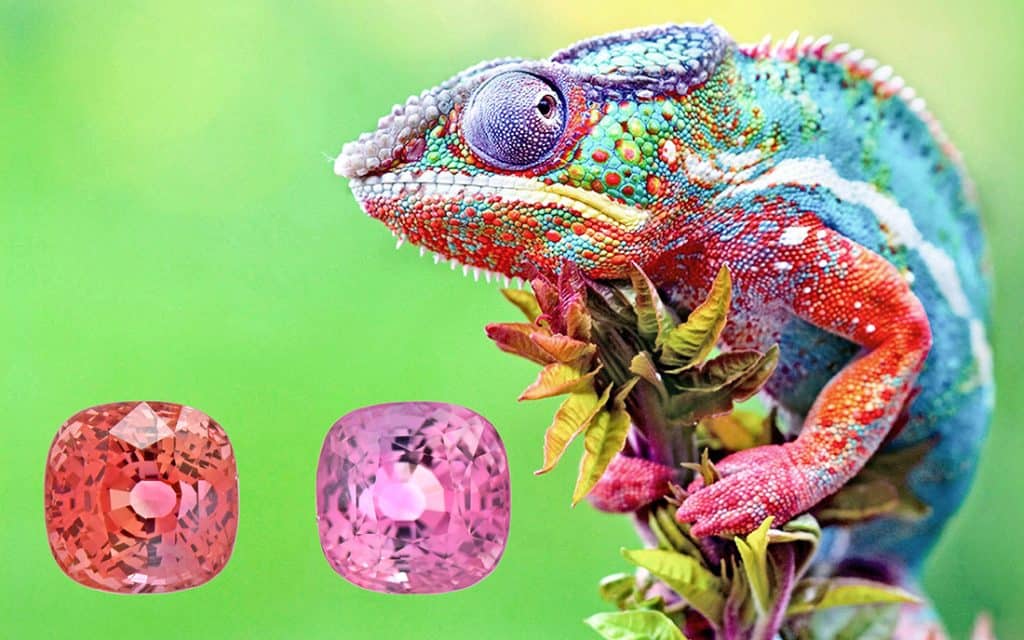
Figure 5: An attractive fancy sapphire from Madagascar showing an unstable (but reversible) colour shift, somehow reminiscent to the chameleon effect in diamonds. Background photo: www.nationalgeographic.com.au
In summary, these orange to pink fancy sapphires of unstable colour – so far observed only from this new source in Madagascar – can still be very attractive in colour and size (Figure 5). The colour shift they show is certainly a challenge for the trade dealing with padparadscha sapphires. However, the good news is that this process is reversible, in many ways similar to the phenomenon found in so-called chameleon diamonds. As such, we suggest that the trade not just be worried, but also has the option of embracing this new material and appreciating this ‘chameleon effect’ as something special.
